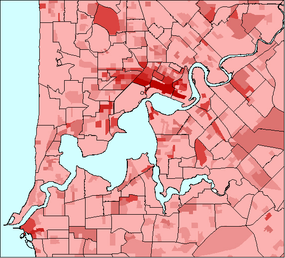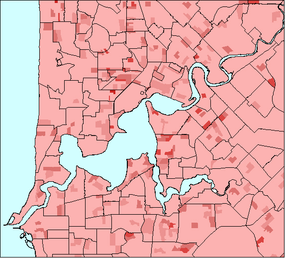The Way We Move
Regular readers of our newsletters will know that Data Analysis Australia began conducting the Perth and Regions Travel Survey (PARTS) for the Department for Planning and Infrastructure in 2002. The survey is still going strong and the methodology developed by Data Analysis Australia for sampling and data collection has been so successful that it has been adopted for travel surveys elsewhere.
PARTS collects data on the travel behaviour of people within the Perth Metropolitan Area and the Shires of Mandurah and Murray. The data covers travel patterns for every hour of the day, every day of the year and will continue over a four-year period. Now that we are more than halfway through the data collection enough information has been collected and processed for meaningful results to be obtained.
You may ask yourself what is the point in collecting so much data on travel patterns at all times of the day and year. "Surely it is only weekday peak traffic that is really important in terms of planning", you may think. This might be true if the data was only for the calibration of transport models dealing with peak hour traffic. However today transport planning goes beyond just looking at peaks and, due to the richness of the data collected, planners from other areas may also be able to extract valuable information, some of which are discussed below.
There are environmental questions, such as "are people car pooling?", which could be answered. Traditional traffic counters on the roads count the number of vehicles, but PARTS also records the number of occupants. This data shows that in about 30% of car trips made during peak times (excluding kids' travel to and from school), there is more than one person in the car.
Advertisements for the Health Department's "Find 30" campaign encourage us to spend at least 30 minutes exercising each day. Are people doing this by walking to nearby places instead of driving or by going for a walk or bike ride specifically for exercise? PARTS gathers information on the distance people travel, their method of travel and their reason for travelling. Just over half of all trips of less than one kilometre are made by people walking or riding bicycles, but only 4% of people walk or ride bikes expressly for exercise.
The Census finds out where people are at a single point in time, the evening, but PARTS finds out where people are at any time of day. For most services it is important to be conveniently located for users, which may be close to where they work, rather than live. Our comparison of population densities at 10am and 10pm on a typical working day clearly shows the disparity between the number of people in the CBD during the day and at night.


For more information on the collection and uses of travel data, please Contact Us.
March 2005
